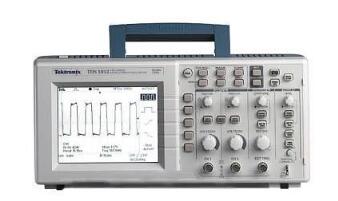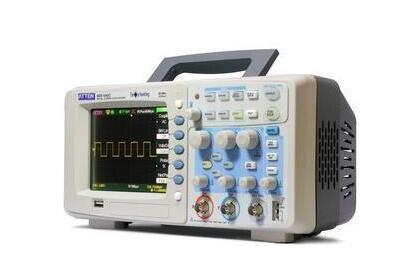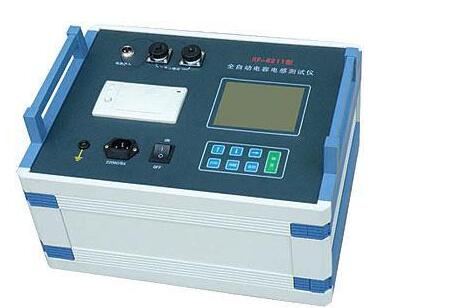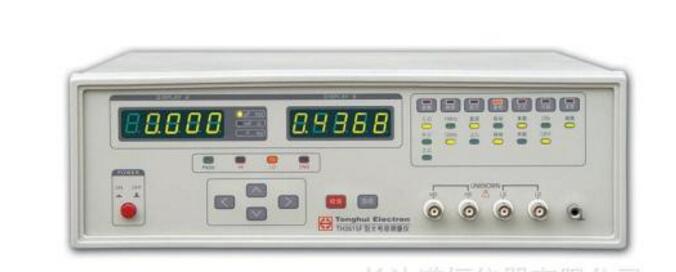The main three indicators of the oscilloscope: bandwidth, sampling rate, storage depth. The higher the indicator, the more expensive the price.
Domestic production of low-end oscilloscopes does not have much technical problems, and high-end oscilloscopes, such as internal acquisition cards and other core devices, cannot be produced domestically. The technology is relatively a small problem, and the equipment for producing these core devices is matched. It is the main problem. The core device produced by the poor device is not up to standard and cannot be used on high-end oscilloscopes.
Maybe you will think that the production equipment can't work, then you can wrap it! But in fact this is indeed a problem. Some equipment is embargoed against China. Even if these equipments are returned, the cost of production will be high, because the Chinese will not buy it if they are not domestically produced.
So in the end, domestic oscilloscopes can not be used to see your own choices. After all, one point is worth the price, depending on your own budget.

Oscilloscopes are divided into numbers and analog
The analog oscilloscope is based on Jiangsu Luyang, Suzhou Guwei, and Shanghai. Green is cost-effective, and there are offices in each province responsible for maintenance. The price of the solid latitude is high and the quality is good. Unfortunately, it is more troublesome after the sale. Shanghai New Construction is an old factory, and now it is basically limited to surrounding sales. Aetna does not produce analog oscilloscopes, I have been to Aetna manufacturers.
Digital oscilloscope: Puyuan, Luyang, Youlide, Antaixin, basically can, the price of the green Yangpu source is higher, the quality is slightly better than the latter two, the price of Unitek is lower, the small signal measurement Antai The letter cannot be captured automatically.
So if you want to buy a simulation, it is recommended to use green and fixed weft. The digital suggestion is to use Puyuan and Luyang.

1. Understand the signals you need to test
Do you want to know what to observe with an oscilloscope? What is the typical performance of the signal you want to capture and observe? Does your signal have complex features? Is your signal a repetitive signal or a single signal? What is the bandwidth, or rise time, of the signal transition process you want to measure? What signal characteristics do you plan to use to trigger short pulses, pulse widths, narrow pulses, etc? How many signals do you plan to display at the same time? What is your treatment of the test signal?
2. Select the core technology difference of the oscilloscope: analog (DRT), digital (DSO), or digital-to-analog (DPO)
The traditional view is that analog oscilloscopes have a familiar control panel and are inexpensive, so the analog oscilloscope is always "easy to use". But with the increasing speed and price of A/D converters, and the ever-increasing measurement capabilities and virtually unlimited measurement capabilities of digital oscilloscopes, digital oscilloscopes have taken the lead. However, digital oscilloscopes display shortcomings such as three-dimensional defects and slow processing of continuous data. It is necessary to have an oscilloscope with digital-analog technology, such as DPO digital phosphor oscilloscope.
3. Determine the test signal bandwidth
Bandwidth is generally defined as the frequency at which the amplitude of the sine wave input signal is attenuated to -3dB, which is 70.7% of the amplitude. The bandwidth determines the basic measurement capabilities of the oscilloscope for the signal. If there is not enough bandwidth, the oscilloscope will not be able to measure the high frequency signal, the amplitude will be distorted, the edge will disappear, the detail data will be lost; if there is not enough bandwidth, all the characteristics of the obtained signal, including ringing and squealing, etc. Meaningless.
4, A / D converter sampling rate (or sampling speed)
The unit is the number of samples per second (S/s), which refers to the frequency at which the digital oscilloscope samples the signal. The faster the oscilloscope's sampling rate, the higher the resolution and sharpness of the displayed waveform, and the less likely the important information and events are lost.

5, the screen refresh rate is also called the waveform update speed
All oscilloscopes will flash, and the oscilloscope will capture the signal a certain number of times per second. No measurement will be taken between these measurement points. This is the waveform capture rate, also known as the screen refresh rate, expressed as the number of waveforms per second (wfms/ s). It is important to distinguish between the waveform capture rate and the A/D sampling rate. The sampling rate indicates the frequency at which the oscilloscope samples the input signal in one waveform or period; the waveform capture rate refers to the speed at which the oscilloscope acquires the waveform. The waveform capture rate depends on the type and performance level of the oscilloscope and has a wide range of variations. Oscilloscopes with high waveform capture rates will provide more important signal characteristics and greatly increase the probability that the oscilloscope will quickly capture transient anomalies such as jitter, short pulses, low frequency interference, and transient errors.
6, select the appropriate storage depth, also known as the record length
Memory depth is a measure of how many sampling points an oscilloscope can store. If you need to capture a burst without interruption, you need the oscilloscope to have enough memory to capture the entire event. The required memory depth can be calculated by dividing the length of time to be captured by the sampling rate required to accurately reproduce the signal.
7. Select different trigger functions as needed
The trigger of the oscilloscope enables the signal to be horizontally scanned at the correct position to make the signal characteristics clear. Trigger control buttons stabilize the repetitive waveform and capture a single waveform.
Most users of oscilloscopes only use edge-triggered mode. If you have other triggering capabilities, it is very useful in some applications, especially for fault finding of new design products. Advanced triggering methods can separate the events of interest. Find out the abnormalities you care about to get the most out of your sampling rate and storage depth.

In this category, we introduce an energy electronic cigarette, it is added with caffeine and other substances to help refresh you, and not nic.
When you feel sleepy, taking a sip will reduce your drowsiness, which is simpler than sparkling coffee.
We are China leading manufacturer and supplier of Disposable Vapes puff bars, energy e-cigarette pen,energy e-cigarette kit,
energy e-cigarette device, and e-cigarette kit, and we specialize in disposable vapes, e-cigarette vape pens, e-cigarette kits, etc.
energy e-cigarette pen,energy e-cigarette kit,energy e-cigarette 0 nic,energy e-cigarette device,energy e-cigarette vaporizer
Ningbo Autrends International Trade Co.,Ltd. , https://www.supervapebar.com